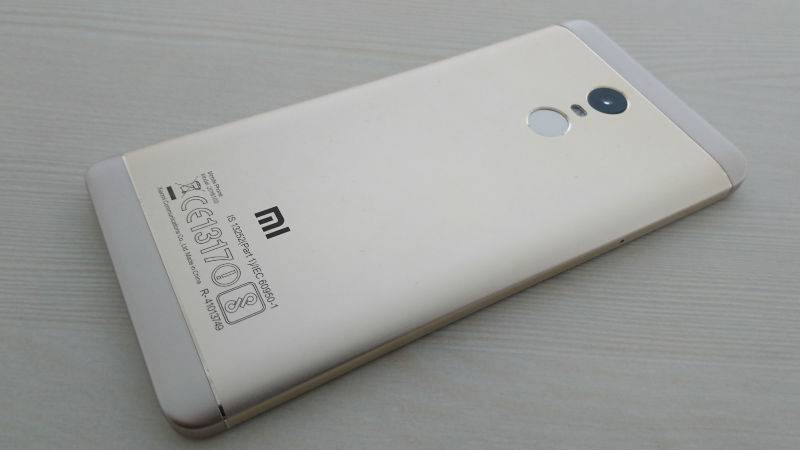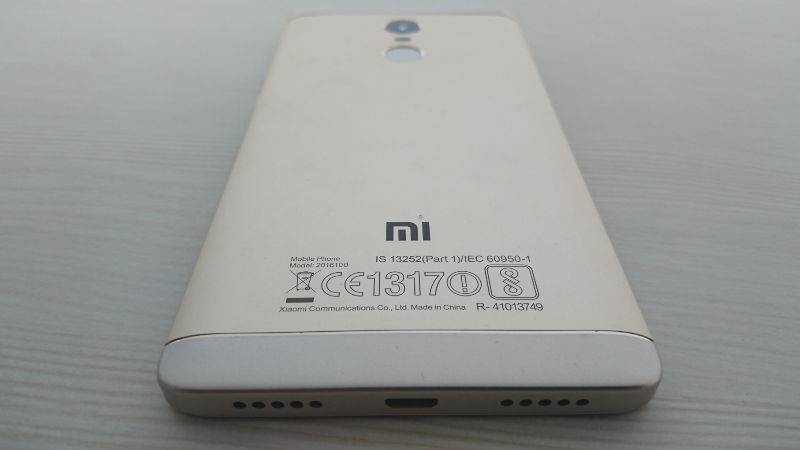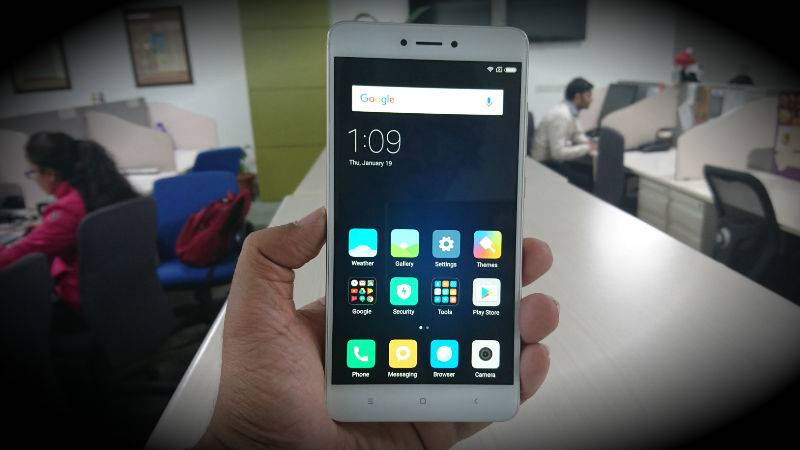TechRadar Verdict
The Redmi Note 4 is an extremely solid, albeit a little boring offering from Xiaomi.
Pros
- +
Much improved battery life
- +
Competitive pricing
- +
Adequate performance
- +
Decent display
Cons
- -
Lacks X factor
- -
Design feels a little old
- -
Rear camera struggles in low light
Why you can trust TechRadar
Design 3.5/5
Features 3.5/5
Performance 4/5
Usability 4/5
Value 4.5/5
The Redmi Note 3 was 3 Xiaomi’s highest selling product in India. Throughout 2016, it sold a massive 3,6 million units and established itself as the budget smartphone king.
The Redmi Note 4 thus has a lot to live up to and the company has gone all out to make sure it lives up to the hype. The smartphone comes with a massive 4GB of RAM, the new Snapdragon 625 processor with 14nm FinFet technology and much improved battery life.
The Redmi Note 4 was launched in China way back in August 2016. Does the Redmi Note 4 have what it takes to give completion like the Lenovo Z2 Plus and the Moto G4 Plus a run for their money? Or has the delayed release caused the completion to catch up?
Let’s find out!

Hardware/Performance
While the Chinese version of the Redmi Note 4 comes with a deca-core MediaTek Helio X20 processor, the Indian variant comes with a Qualcomm Snapdragon 625 SoC as Xiaomi has been banned from selling MediaTek devices in India due to a patent dispute with Ericsson. Additionally, the Note 4 comes with 3/4 GB of RAM and the Adreno 506 GPU.
The Snapdragon 625 is the first 600 series processor from Qualcomm that comes with 14nm FinFet technology. This translates to the Redmi Note 4 having 14nm transistors as compared to 28nm in the Redmi Note 3 which leads to better power management and efficiency.
Xiaomi claims this translates to as much as as a 25% increase in battery life as compared to the Redmi Note 3. You can read more about the battery life in the battery section of our review.
Sign up for breaking news, reviews, opinion, top tech deals, and more.

The FinFet technology also helps in thermal management, with the Redmi Note 4 not getting too hot even during heavy gaming and intensive use. This is a breath of fresh air in a world where almost every smartphone suffers from overheating issues.
The device handled day to day tasks like scrolling through photos, navigating through home screens, opening applications and browsing the net easily. Casual games like Subway surfers run very well, although intensive titles like Modern Combat 5 exhibit a few dropped frames.
Design
The Redmi Note 4 sports a premium metal body with slim tapered edges which are 5 mm at its thinnest point.
Xiaomi has made a concerted effort to make the Redmi Note 4 perfectly symmetrical. The smartphone is great to hold in the hand thanks to tapered edges around the back and the 2.5D curved glass on the front.
The left side of the device sports the hybrid SIM slot which allows you to either put two SIM cards or 1 microSD card and 1 SIM Slot. I personally find Hybrid SIM slots irritating and would have preferred an option to insert a microSD card along with two SIM cards.
The Redmi Note 4 comes with capacitive keys beneath the display which are very responsive and easy to use. The right edge has the power key and volume toggle and the top houses the IR blaster, secondary microphone and the 3.5mm headphone jack. Yes! Unlike the iPhone 7, the headphone jack is alive and well.

The speaker grille, primary microphone and the micro-USB slot are found on the bottom edge of the device. The redesigned bottom firing speakers deliver nice and crisp audio. Dual speakers are sorely missed though.
The device also comes with an infrared sensor and a fingerprint sensor at the back of the device, right below the rear camera. What is interesting to note is the fact that the Xiaomi Redmi Note 3 was Xiaomi's first device to come with a fingerprint sensor.
The Redmi Note 4 comes in three color variants - Dark Grey, Gold and a super sleek matte black which has classy looking silver accents.
Also read : Xiaomi Redmi Note 4 vs Redmi Note 3; Worth the upgrade?
Storage
The device comes with 16/32/64GB of internal storage which can be expanded with the help of a microSD card (up-to 128GB) . This is a marked improvement over the 32GB max storage found on the Redmi Note 3.
Display
The device has a 2.5D 5.5-inch fullHD display, with a resolution of 1080x1920, translating to a pixel densityof 401 ppi. The Note 4 is the first Xiaomi smartphone to use 2.5D curved glass which helps with the in hand feel.

While in the day and age of QHD displays, a 1080p resolution panel may sound disappointing, but in real life, it is rather impressive, with vivid colors and great brightness levels. The Note 4 also comes with a reading mode to help alleviate eye strain.
The display has good viewing angles and is also easily discernible in bright sunlight. Outdoor legibility is decent, although the blacks are not as deep as I would have liked.
Also read : Xiaomi Redmi Note 4 vs Redmi Note 3; Worth the upgrade?
Connectivity
On the connectivity front, the device supports 4G LTE, VoLTE, GPRS, 3G, 2G, GPS/A-GPS, Glonass, Bluetooth 4.1 and microUSB for data transfer and charging.

The lack of USB Type C can be seen as both a negative as well as a positive. On one hand, USB Type C would have made the phone future proof. But on the other hand, it has not still not achieved widespread acceptance and the number of devices featuring USB Type C are still extremely low. With microUSB, you will never be in a situation where you run out of charge and your friends don't have the cable you need.
Software
The Xiaomi Redmi Note 4 runs Xiaomi's latest MIUI 8 based on Android 6.0.1 Marshmallow, which comes with a host of updates . During the launch event, Xiaomi announced the rollout of the Android 7.0 Nougat preview which will be available soon for Mi fans. The company has promised that the final version will be available in the coming weeks.

While Xiaomi has extensively modified and tweaked Android in MIUI 8, it is on the whole, very smooth and light, and is amongst the better Android skins out there.
Inspired by the kaleidoscope, MIUI 8 features a revamped design language with an emphasis on bold colours and interactive animations. It also comes with several small but significant features aimed at simplifying a user's life such as Dual Apps, Second Space and Scrolling screenshots and Quick Ball.
You can read more about MIUI 8’s extensive feature set here.
Cameras
On the imaging front, the Redmi Note 4 features a 13MP BSI CMOS rear camera with an aperture of f/2.0 and phase detection auto-focus. The rear camera lens is sourced from Samsung and Sony and has a 25% larger pixel area as compared to the Redmi Note 3.
On the front, there is a 5MP sensor with a wide angle lens that Xiaomi claims has a field of view of 85 degrees.

The rear camera produces crisp, well exposed shots though it still struggles with low light images just like the Redmi Note 3. Images shot in less than ideal lighting conditions lack detailing and have quite a bit of noise. Sharpness is also an issue with a lot of jagged edges and pixelation in any complex shot such as dense foliage.
Well lit outdoor shots and indoor shots with adequate light are surprisingly great and a big step up from the Redmi Note 3.
The camera performance is extremely snappy, with little or no lag in focusing and processing. The phase detection auto focus does a really good job, focusing on objects extremely quickly. The front camera is fine for causal selfies intended for social media but don't expect to be taking stellar v-logs with it.
Battery
The device is powered by a mammoth 4,100mAh battery. The battery life of the Redmi Note 4 is greatly improved from the Redmi Note 3. I use my device quite intensively and the device lasted me throughout the day easily. With a slightly lighter workload such as taking a few images and the occasional social media use, the handset can easily last you more than a day.

When it comes to screen on time, I averaged about 4.5-5 hours in my week of use, with the maximum being a whopping 6.5 hours.
Price and verdict
Redmi Note 4 comes in three different variants:
2GB RAM/ 16GB internal storage : Rs 9,999,
3GB RAM/ 32GB internal storage : Rs 10,999
4GB RAM/ 64GB internal storage : Rs 12,999

All in all, the Xiaomi Redmi Note 4 is a comprehensive update over its predecessor. It has a great display, much improved battery life, adequate performance and a decent display.
The problem with the Redmi Note 4 is the fact that it offers little to differentiate itself from the competition. The phone has a premium build but looks like any other Chinese smartphone on the market. The rear camera still struggles in low light and the lack of dual speakers and USB Type C are off putting.
The Redmi Note 4 is an extremely solid, albeit a little boring offering from Xiaomi. While the Redmi Note 3 transformed the Indian budget smartphone market, the Redmi Note 4 arrives at a time where the competition has caught up. Devices like the Lenovo Z2 Plus offer a better package for just a little more money.
Also read : Budget showdown: Xiaomi Redmi Note 4 vs Moto G4 Plus

Features Writer at NDTV Gadgets 360. Past - Sub Editor at India Today Tech, Content Writer at TechRadar India.
A PG diploma holder in English Journalism from IIMC, New Delhi. Avid tech enthusiast, cinema buff, voracious reader and Formula 1 fanatic.
